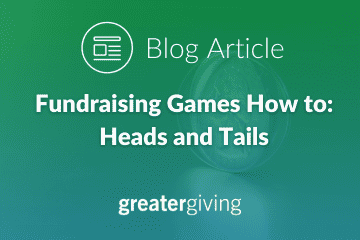
Boost Your Fundraising Event with a Heads or Tails Game
In the realm of nonprofit fundraising, traditional activities like the Wall of Wine and Heads and Tails have stood the test of time. However, injecting your unique flair into these classics can elevate engagement and revenue generation. Today, we’ll delve into the captivating world of Heads and Tails—a game that transcends the ordinary raffle experience, adding a novel twist to captivate even the most hesitant donors.
Choosing the Perfect Prize
The first step in orchestrating a successful Heads and Tails game is selecting an enticing prize. Aim for an item that resonates with a broad audience, maximizing participation. The value of the prize should align with the ticket sale price, ensuring an attractive proposition for potential participants.
Typically, 20-25% of event attendees participate in a raffle. As your guest list grows, so does the potential for ticket sales. Conscientiously price your raffle tickets, considering the budget of your attendees—$15 for smaller events, $25 for larger gatherings, and potentially $50 or $100 for grand occasions, depending on the prize’s value.
Strategic Promotion for Maximum Impact
To maximize ticket sales, shout it from the digital rooftops! Start promoting your Heads or Tails game well before the event. Create a dedicated page on your event website, distribute enticing flyers showcasing the prize, have your committee or board members sell tickets before the event.

Make it Memorable
Swap out traditional ticket stubs for something more memorable. Gift participants in the Heads or Tails game with fun and inexpensive party favors tied to your event theme—light sticks, toys, or noisemakers. For those who pre-purchased tickets, include these favors in the bidder packet at check-in.
Maximize Participation
To ensure maximum engagement, coordinate with your auctioneer in advance. During the entertainment segment or before the live auction, encourage last-minute participation. Place sign-up sheets at each table for spontaneous participants and dispatch volunteers with extra raffle favors to entice attendees. Remember to collect sign-up sheets before the game begins..
How the “Heads and Tails” Game Works
As the moment arrives, your auctioneer takes center stage to guide participants through the Heads and Tails journey. Here’s a breakdown of how the game unfolds:
- Initial Selection: Participants stand and choose either “heads” or “tails” by placing their hands accordingly.
- The Coin Toss: The auctioneer flips a coin, announcing whether it landed on heads or tails. Those whose choice aligns with the coin flip remain standing, while others take their seats.
- Progressive Rounds: The auctioneer continues the process, eliminating participants with each successive coin toss until only a handful remain. If players bought multiple opportunities to pay they can count as extra lives to keep them in the game.
- Final Showdown: The last few participants are invited to the stage for the ultimate coin tosses until only one triumphant player remains. This lucky individual emerges as the Heads and Tails raffle winner.
By infusing creativity into the classic raffle format, Heads and Tails becomes more than just a fundraising activity—it transforms into a memorable experience for your event attendees. Elevate your fundraising game by embracing this exciting twist on tradition and watch as your nonprofit reaps the rewards of increased engagement and revenue.

I love Heads
and tails
Us too! Check out our book on “26 Proven Revenue Enhancers for Your Fundraiser” https://go.greatergiving.com/auction-games
Is it illegal for kids to play head and tails at a nonprofit auction? Is heads and tails considered gambling?
It is always a good idea to check first with your state and local laws. Here is a pretty good reference site – https://fundraiserhelp.com/state-raffle-laws.htm
If you happen to get down to only 2 remaining, what happens if they both select the same thing? Do you have them pick again?
HI Becky,
If both pick the same thing you keep going or you can let them know one of them has to pick heads and one has to pick tails.